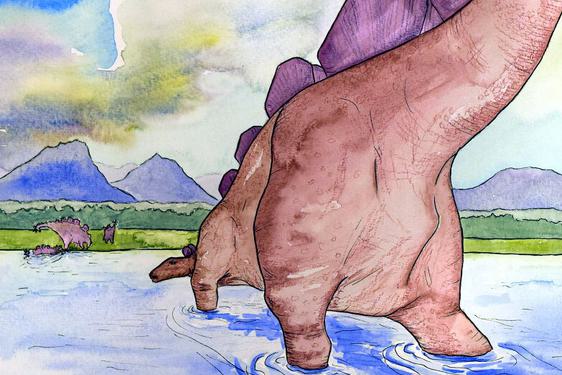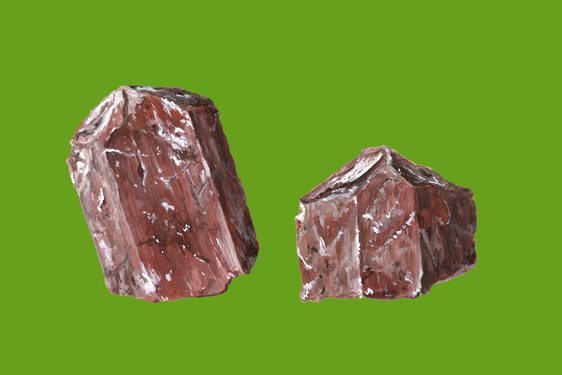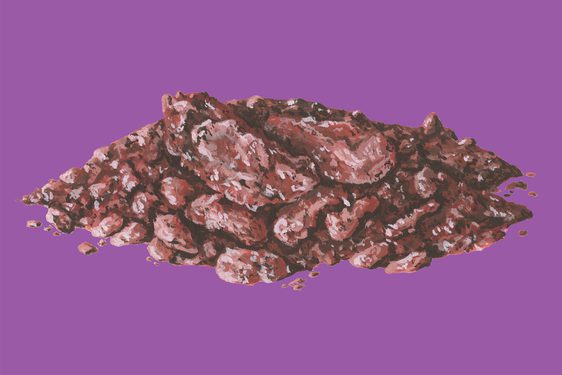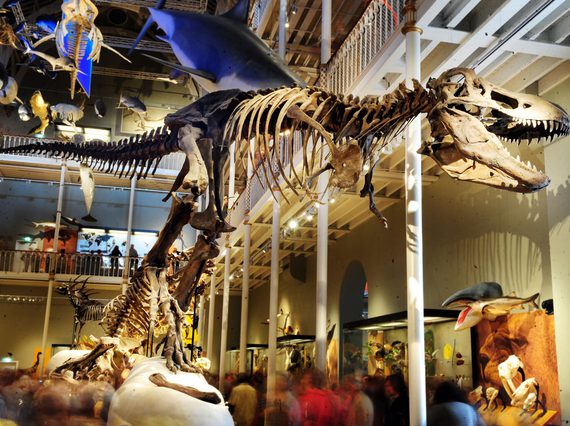
Tyrannosaurus rex
News Story
It is 66 million years since Tyrannosaurus rex (T. rex) actually walked the earth. But the T. rex at the National Museum of Scotland brings people as close as possible to appreciate the scale and power of the real thing.
Where was the skeleton found?
Our T. rex is a cast of a specimen that was found in 1988 by rancher Kathy Wankel at Hell Creek, Montana. The specimen was excavated by a team from the Museum of the Rockies, led by palaeontologist Jack Horner. According to Horner, “Montana is a great place to find dinosaurs because the right age rocks (those that encase dinosaurs) are exposed at the surface of the ground, and many rivers cut through these sediments making it easy to find dinosaur remains.”
The skeleton is 85% complete, including the skull and the first complete T. rex forelimb. It was the largest and most complete T. rex ever found when it was first discovered. It is now the second most complete, and is tied with the Sue skeleton, found in 1990 in South Dakota, as the largest.
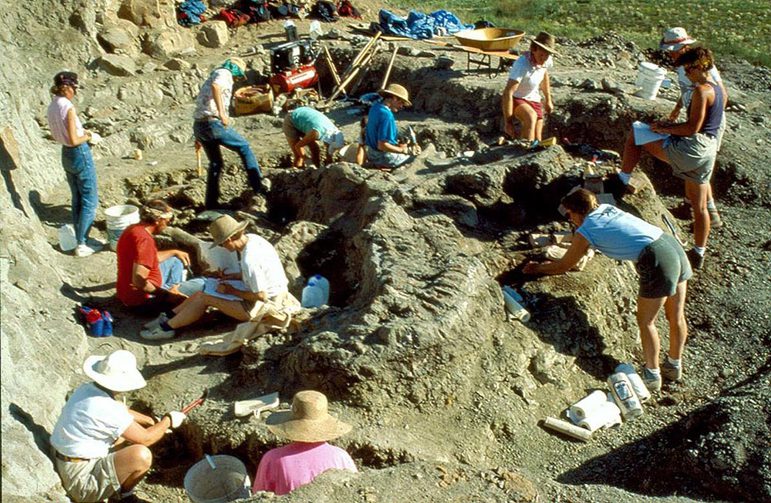
What do we know about this T. rex?
The T. rex was one of the largest carnivorous dinosaurs that ever existed. It lived in forested river valleys in North America during the Late Cretaceous period, and became extinct about 66 million years ago.
Fossil evidence shows that this T. rex was about 12 metres long with a six-metre tail. It had strong thighs, and together with its long powerful tail, which gave it balance, it moved quickly. Its massive 1.5 metre long skull provided it with a powerful crushing bite.
The T. rex's serrated conical teeth allowed it to pierce and grip flesh and bone, and its strong neck muscles would help it rip flesh from the carcass of its prey. Its two-fingered arms could help manipulate prey, but were far too short to reach its mouth.
It is believed that this powerful predator could eat up to 230 kg of meat in one bite! Broken bones have been found in its dung, and fossils suggest that it crushed and broke bones as it ate. This T. rex died when it was between 16 and 18 years old.
Image gallery
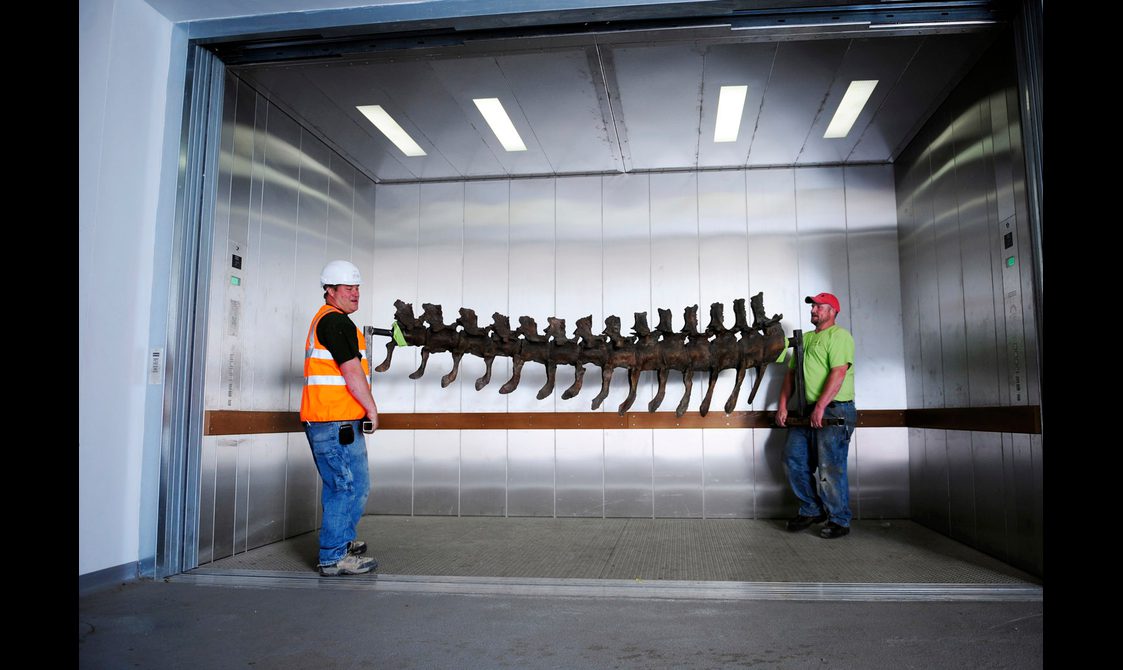
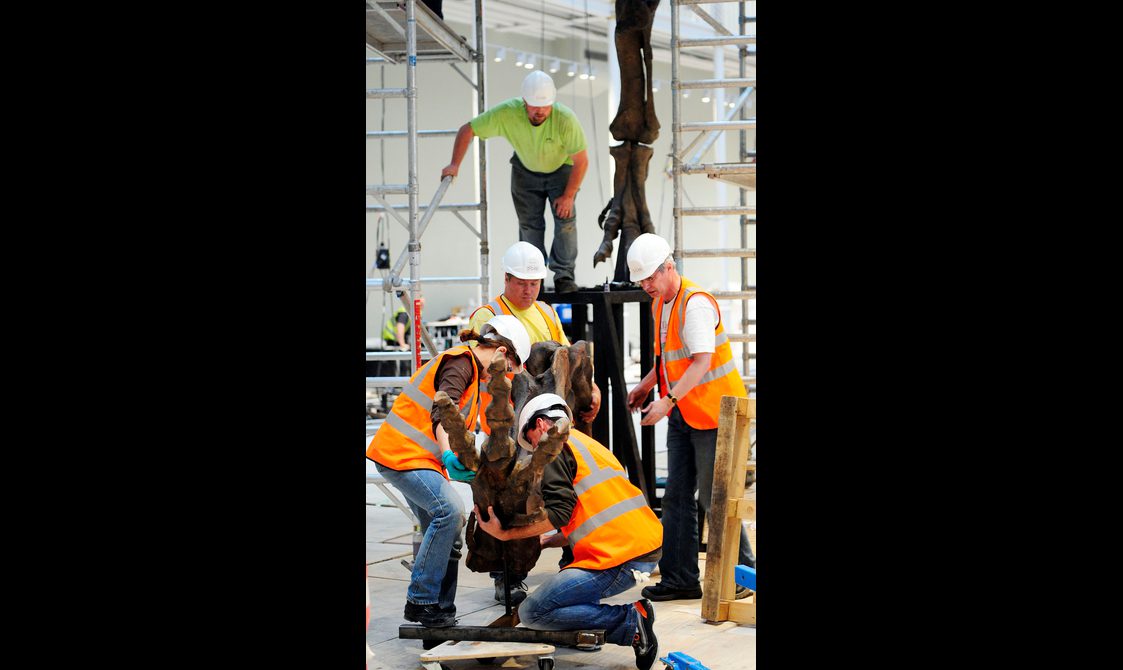
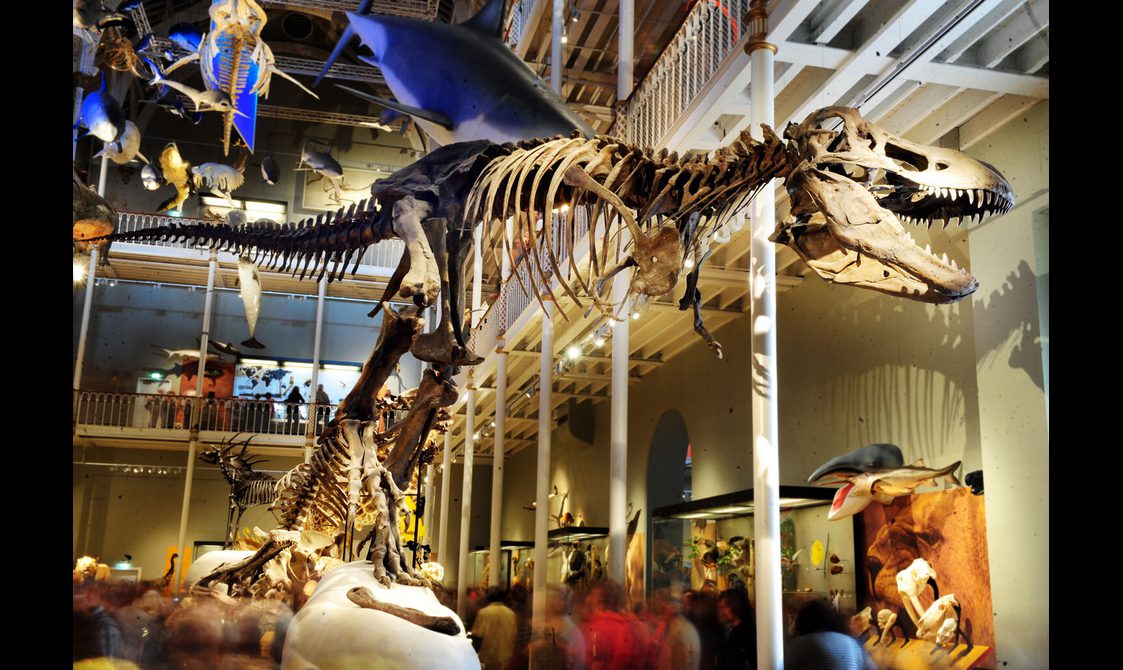
Marvel at the scale of the T. rex (museum reference G.2011.16.1) for yourself in the Animal World Gallery at the National Museum of Scotland.
